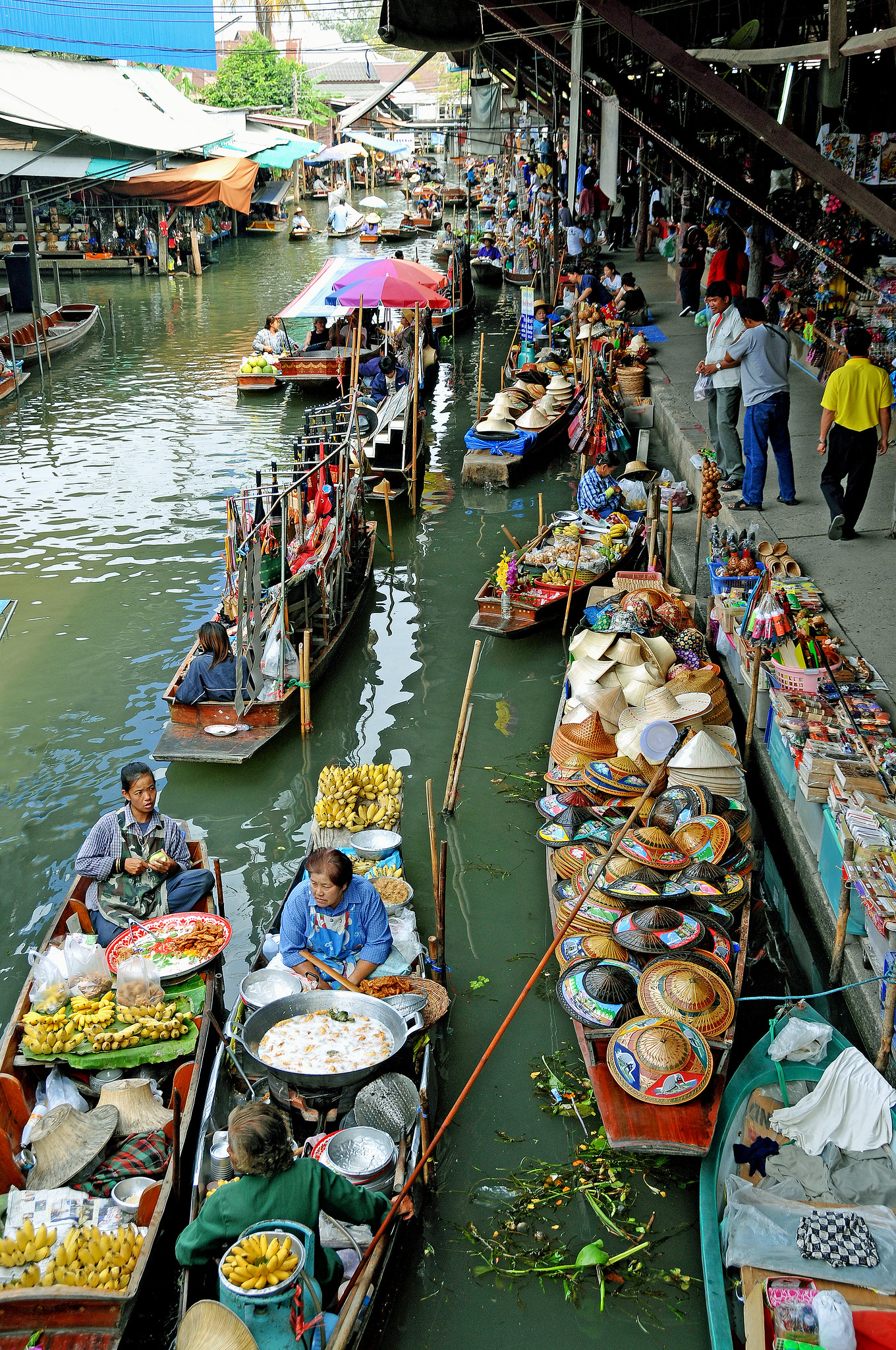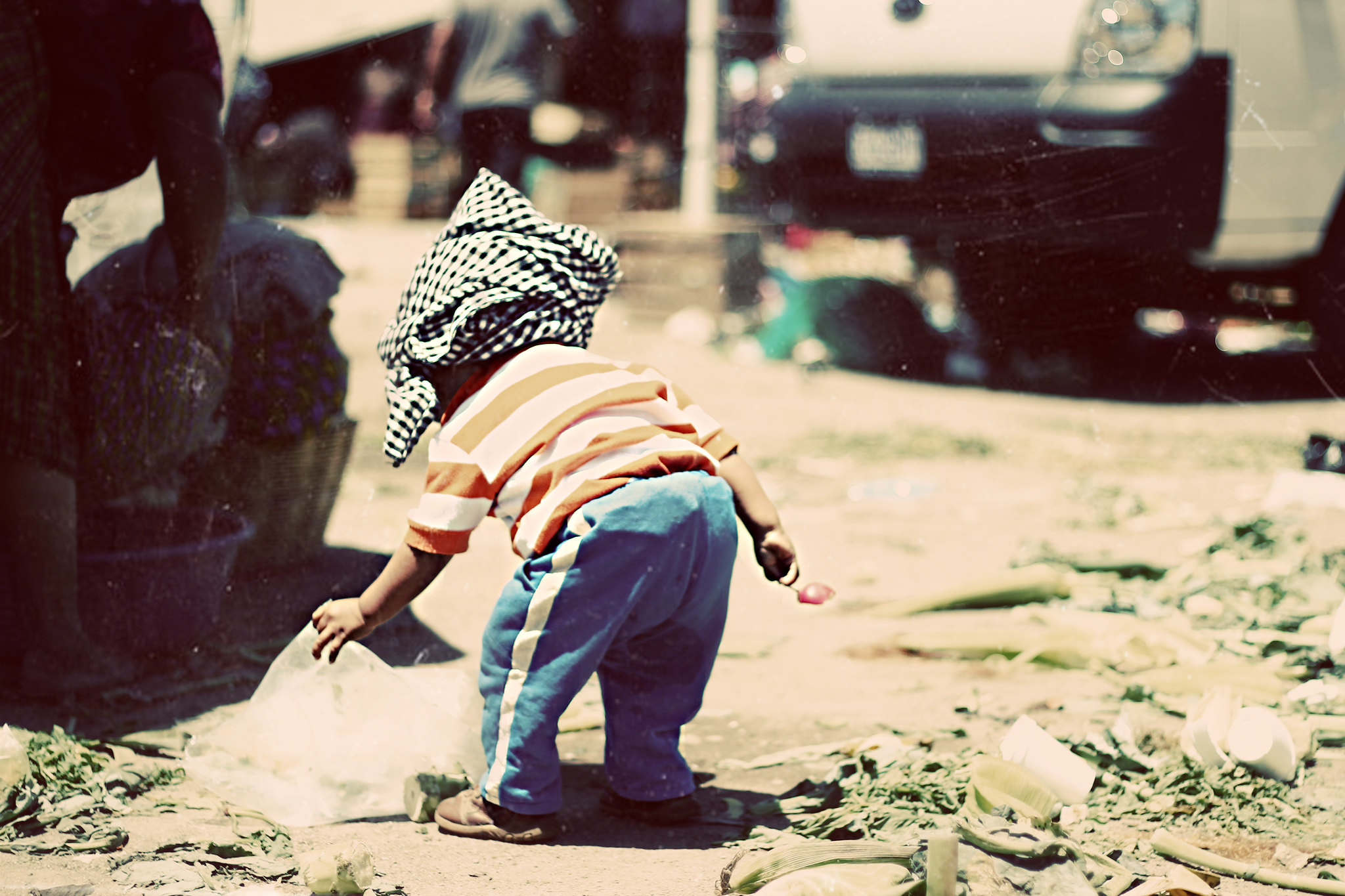Chapter 14. Back to the Big Picture: Globalization and Trends
14.1 Globalization and the Tourism Industry

In today’s integrated and interdependent world, multiple forces represent both opportunities and threats to tourism. This chapter explores the topic of globalization and how it relates to tourism, and then examines trends (political, economic, social, technological, legal and environmental influences — PESTLE). The chapter closes with a reflection on what all this means for tourism in British Columbia.
Depending on the focus of the discussion, globalization can be defined in several ways. One broad definition is:
A complex web of social processes that intensify and expand worldwide economic, cultural, political and technological exchanges and connections (Campbell, MacKinnon, & Stevens, 2011, p. 4).
Globalization can also be simply described as the movement of goods, ideas, values, and people around the world. The term was first used in the early 1950s to recognize the increasing interdependence of economies and societies around the world. Globalization, however, has existed for centuries by way of evolving trade routes, including the slave trade, colonization, and immigration.

Today, we are divided into separate countries, each looking out for its own national self-interest, with all its flaws and benefits. At the same time, other entities such as multinational corporations cross borders, which leads to global economic and political integration. Many benefits can result from global integration and interdependence, but we also need to heed its negative effects.
We can look at the relationship between globalization and tourism in several ways. For the purposes of this chapter, we will consider the impact of tourism and travel on globalization, and the impact of globalization on tourism. But first, let’s keep in mind why it is important for a local tour operator, general manager, or tourism business owner to think about globalization. More importantly, let’s consider where we should be looking to understand globalization and future trends. The rest of this chapter will address these topics.
The Impact of Globalization on Tourism
We can assess the impact of globalization on tourism from a number of perspectives. Here, we will discuss five examples: global mobility and ease of travel; population and demographic trends; terrorism, safety, and security; increased awareness of new destinations; and poverty.
Global Mobility and Ease of Travel
The advances made in transportation that have enabled global mobility are particularly significant. Modern aircraft, cruise ships, trains, and other modes of transport allow people to move quickly and relatively cheaply. Aircraft such as the Boeing 787 Dreamliner have opened new routes by creating an aircraft capable of flying “long haul” distances with a smaller passenger load. Fast trains, road systems, and even city bike rental programs enable people to move, tour, and explore the world. These changes have allowed more people to travel more often in less time.

Ease of travel has also helped to overcome the barriers of fear, frustration, and expense. For example, an international banking system allows access to money almost anywhere in the world. Multinational corporations, which provide flights, local transportation, and accommodation and food, have allowed for “one-stop shopping” for travel bookings. Mobile devices have also changed the nature of travel in terms of what travellers do and how they interact with a destination, making it easier to, for example, select a restaurant, navigate a big city, or translate a foreign language. As a result, there are fewer unexplored places in the world anymore.
The ease of travel has also facilitated the rapid global transfer of viruses. While spread owing to global air travel has occurred in other outbreaks such as SARS in 2003, the COVID-19 pandemic of 2020 illustrates the new challenges faced by the air transportation system. The willingness for quick action to contain future viruses means that airlines will need to be ready, willing and able to terminate travel routes upon any notice of health concerns.
Population and Demographic Trends
According to the United Nations Department of Economic and Social Affairs (2019a), the world population reached 7.7 billion in 2019 and is projected to exceed 9.7 billion by 2050. The population continues to increase, but not uniformly across the world. The overall global population rate of increase is slowing but birth and death rates are vastly different between developed and developing nations (UNDESA, 2019b). For instance, among developed countries, there is a growing percentage of people over 65 that will reach 25% by 2050 (UNDESA 2019a). With a smaller percentage engaged in the workforce, there will be implications on social and health services. Globally, the people under the age of 24 will decline in every region of the world. Among developing countries, half the global growth between 2019 and 2050 will come from Sub-Saharan Africa. For instance, Nigeria will double its population to 4 million by 2050 (UNDESA 2019b). The two most populous countries, India and China will also experience different trajectories; India will surpass China as the most populous country in the world by 2027 (UNDESA 2019b).
Other critical population trends affecting global development and tourism include the following (UNDESA 2019c; UNDESA 2019d):
- By 2100, approximately 40% of the world’s total population is expected to be African. While birth rates are tending to fall around the world, they are still higher across Africa than in most other parts of the globe. This could result in a youth dividend or further exacerbate problems on the African continent.
- More people are migrating than ever before, with 272 million recent migrants in 2019 alone compared with about 175 million in 2000. The top five destinations are the United States, Germany, the Russian Federation, Saudi Arabia, and the United Kingdom.
- Some 55% of the global population is urban, and the urbanization trend is expected to continue as people search for more jobs, more social and health services, and more activities. Not everyone benefits equally though, as housing and other infrastructure struggles to keep up with the growing urban population.
To keep up with all of these changes in demographics, destinations will need to provide products and services to suit the older, culturally diverse, multi-generational travellers as well as the adventurous youth. Additionally, hiring and retaining staff will require a rethinking of human resource policies and procedures, compensation, and other aspects for the changing population of employees.
Terrorism, Safety, and Security
Terrorist attacks and political unrest globally have certainly disrupted tourism, but not halted it. The areas most affected, of course, are those where unrest has occurred and has been the focus of extensive media attention. A global terrorism index produced by the Institute of Economics and Peace (2019) shows that while fatalities from terrorism have declined since 2015, the number of affected countries, 71, is the highest since 2002. Of note is the rise in far-right terrorism in western countries, with an increase of 320% over the past five years (p. 4).
The 2020 global pandemic for COVID-19 resulted in a massive and sudden transformation in the relationship between safety and travel. Starting in early March, 2020, the Canadian government moved toward closing the borders and curtailing outbound and inbound travel. These efforts were to, at first, contain the spread of the virus internationally, evolving toward a national quarantine to “flatten the curve” of number of people effected. Clearly, the pandemic has changed how we travel, and how we define safety of travel in a global setting.
While safety and security may not be the driving reasons for tourists selecting a particular destination, certainly a lack of safety and security often eliminates a location from travellers’ “wish lists.” Safety and security for travellers is becoming more important as countries move to protect their citizens. Government agencies around the world produce advisories and warnings for their citizens to stay away from dangerous locations and political unrest.
Take a Closer Look: Travel Advisories
Travel advisories serve as warning systems for people from specific countries to avoid particular destinations because of actual or potential threats to citizens. To learn more about advisories for specific countries, see the Canadian government web page at Canada’s Travel Advisories and compare them to Australia’s Travel Advisories, the United States’ Travel Advisories, and the United Kingdom’s Travel Advisories.
The focus on safety and security has had several impacts on travellers. Most notably, security at most airports has been increased in an effort to protect people and planes (Flight Global, 2015). Screening procedures can take longer and some items are no longer allowed on board. Other security requirements, such as showing passports and providing fingerprints, have been implemented for entry into some countries. While all acts of terrorism cannot be stopped, the tourism industry is attempting to provide as much safety and security as it can.
Increased Awareness of New Destinations
Another influence of globalization on tourism is a greater awareness of destinations and the range of leisure activities, sites, and cultures to visit around the world. Generating knowledge of a destination is obviously a key first step in marketing a destination, and this is achieved by way of travel shows, films, social media, and other forms of communication. The competition to attract visitors is fierce considering the sheer number of places available for travel; it can be easy to get lost in the noise of global competition.
Poverty

Globalization has contributed to increased demand for goods and services and overall economic growth, with the result of global poverty having decreased over the years. However, at the same time, the gap between the richest and poorest has expanded. A significant portion of the world’s population is simply unable to participate in, or benefit from, tourism. The economic gains from a tourism economy in a developing country such as Honduras versus a developed country such as Canada is unequal. Simply put, not everyone has the same opportunities to profit. Environmental costs are also unevenly distributed in the world, with poor countries lacking the resources to adapt to impacts (such as droughts, increased disease, soil erosion), and shouldering the majority of the repercussions of phenomena such as global warming.
Another way to analyze the interplay between tourism and globalization is to consider the reverse view: the impact of tourism on globalization.
Impact of Tourism on Globalization
In this section, we will look at tourism as a global force — for peace, for cultural homogenization, for commodifying cultures, and for shaping the way we see the world.
Tourism as a Force for Peace
In the 1980s, a popular hypothesis was that tourism supported global peace by allowing travellers to learn about other cultures and meet people from other nations, as well as offering benefits accrued from international business. Peace is an obvious requirement for tourism if the industry is to be robust and sustainable. However, to date, there is little empirical evidence to support the claim that tourism fosters peace, however attractive as the idea may be. However, there is a growing body of research on the relationship between tourism, social justice, and human security, both negative and positive. Clearly, the simple presence of tourism does not immediately equate to societal benefit. Careful planning and a focus on policies supporting community well-being and sustainability are required.
The United Nations Sustainable Development Goals (SDGs) are important for tourism organizations to take into account. They help in guiding the evolution of tourism and travel toward a more positive and hopeful form of tourism as well as enabling a more sustainable, and peaceful, future.
Tourism as Cultural Homogenizer

Nevertheless, tourism does offer the opportunity to teach people about how to respect other cultures. Whereas some argue that globalization has a homogenizing effect on cultures, as Western values are spread through music, fashion, film, and food, rendering one culture indistinguishable from the next. But tourism cannot be viewed as the only means of transmitting western values.
Some beliefs and values, such as embracing equality, inclusion, and diversity, or the need to protect children from harm, should be shared around the world. In the context of tourism and travel, these values are significant. For instance, companies need to ensure that their human resource practices are consistent and fair throughout the world. Exploiting children for sex is illegal, punishable in both the country visited and the home country of the tourist; some airlines and hotels are actively involved in supporting the prohibition of child sex tourism. Travellers are expected not to deface heritage sites or take rare or endangered natural or cultural objects as souvenirs. Such regulations speak to the universality of certain values and beliefs, which we all are required to follow as global citizens.
Tourism as Commodifier

Another possible influence of tourism on globalization is the process of cultural commodification, which refers to the drive toward putting a monetary value on every aspect of culture, from buying a sculpture stolen from an ancient temple, to buying endangered objects such as ivory and coral, or buying a T-shirt that desecrates a symbol or object important to another culture. This trend results in the degradation or devaluing of cultural values and beliefs and was explored in Chapter 12 on Indigenous tourism.
As one of the world’s largest industries, tourism impacts local, regional, and global economies. Resorts dot coastlines around the world and offer a welcome respite from colder climates to anyone wishing to experience a tropical beach, as well as the local culture and nature. While benefit comes to the community in the form of jobs, more often than not the larger share of the wealth leaks offshore. In response, local entrepreneurs and aid organizations have helped with initiatives that embrace local ownership in order for the wealth generated from tourism to stay in country. Community-based tourism, responsible tourism, and social entrepreneurship all aim to bring greater benefit to local communities.
Tourism As a World View
Tourism is also a major influence in how we see and understand the world. Keith Hollinshead (2019) refers to it as tourism world-making, or the way in which a place or culture is marketed and/or presented to tourists. Unlike local people, travellers experience a place for a few days, with limited knowledge of the culture and local way of life. Some visitors rely on available tourist information to make the most of the experience and to see the highlights. Others turn away and attempt to “go local” in search of the authentic experience with the belief that they can truly understand a place by avoiding the tourist sites.

If tourists stay in their resort in a given country, their only interaction with a local culture may be the staff at the hotel. In many cases, visitors experience a place in a fragmented, disconnected way, seeing only a portion of a place. How much can be gained from such short and transient experiences? This debate leads to one of the often discussed, if not hotly debated, topics in tourism, that of authenticity of experience. In 1976, Dean MacCannell released his book The Tourist: A New Theory of the Leisure Class, in which he argued that even those events that seem to be authentic are in some way staged for the visitor.
Take a Closer Look: Cannibal Tours
In 1988, Dean O’Rourke shot a documentary profiling the experiences of jet-set travellers as they encountered locals in Papua New Guinea. The movie highlights the challenges that happen when visitors meet with “the other,” in that their expectations shape the behaviours of the locals. The movie features interviews with the locals as well as tourists. Watch the movie Cannibal Tours.
As a quick review before leaving here, drag the following factors to the correct description between globalization and tourism.
Now let’s look at some predominant trends in the industry.
An acronym for political, economic, social, technological, legal and environmental forces.
The movement of goods, ideas, values, and people around the world.
Making the same, i.e., the effect of tourism helping to spread Western values, rendering one culture indistinguishable from the next.
The drive toward putting a monetary value on aspects of a culture.
A term to describe using a local-ownership approach in order for the wealth generated from tourism to stay in a destination.
The way in which a place or culture is marketed and/or presented to tourists.
A hot topic in tourism that started with MacCannell in 1976 and continues to today; discussion of the extent to which experiences are staged for visitors.

